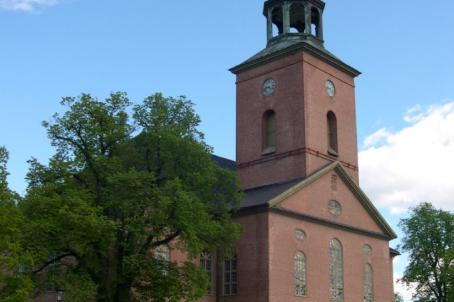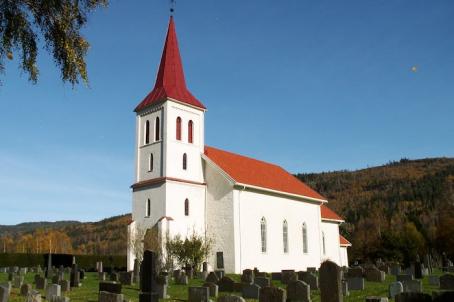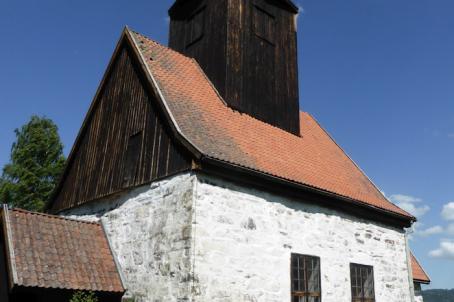Church of Hedenstad
The church of Hedenstad is a medieval stone church that was built in 1100. The interior was completely redone in 1889 and the exterior was restored in the 20th century, mainly in the 1950s and 1960s.
The church of Hedenstad is a medieval stone church that was built in 1100. The interior was completely redone in 1889 and the exterior was restored in the 20th century, mainly in the 1950s and 1960s.

The church in Kongsberg, which was consecrated in 1761, was designed by J. A. Stukenbrock, but it was M. Heltzen who completed the building after Stukenbrock's death. Kongsberg was the second largest town in Norway at that time due to the silver industry, and the location and size of the church show that it was a prestigious building for the town. Externally, the church has a simple brick exterior with large arched windows and high ceilings, and a tower that rises above the roof on the arm of the cross behind the altarpiece.

Efteløt Church is a medieval stone church which, according to the Eystein land register from around 1390, was dedicated to the Virgin Mary and John the Baptist. In 1876, major changes were made to the church. In 1953, the church underwent a further refurbishment, led by Ragnar Nilsen and Finn Krafft. The old ceiling decoration was painted and 17th-century frescoes were discovered inside.

The old church of Fiskum is a medieval stone church with a short rectangular nave and a lower and narrower choir at the right end. On the north side of the choir, a sacristy was built in brick, probably in the 18th century, and in front of the church's entrance portal on the west side, there is a porch. The church has a gabled roof with a turret. The old church in Fiskum was to be demolished when the new church was built in 1866, but the inhabitants of the village, with the priest H. Kiær as the figurehead, opposed it.